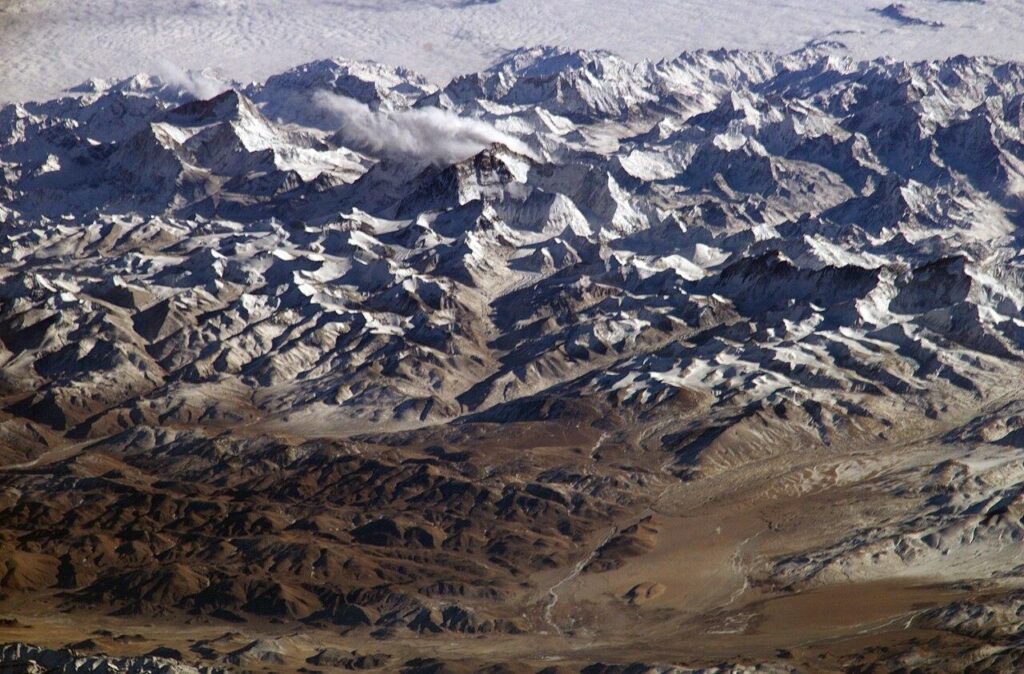In a recent statement that has drawn significant attention, former Chief Election Commissioner S.Y. Bhagwat has sounded a “warning bell” on the escalating ecological threats facing the Himalayas. Addressing concerns over the region’s fragile environment, Bhagwat emphasized the urgent need for sustainable measures to protect the Himalayas from increasing human interference and climate-related challenges. His remarks come amid growing alarm over deforestation, glacier retreat, and biodiversity loss in one of India’s most vital ecological zones, underscoring the pressing call for coordinated conservation efforts.
Bhagwat Highlights Growing Ecological Threats in the Himalayas
Dr. Madhav Bhagwat, a leading environmentalist, has raised urgent concerns about the escalating ecological risks in the Himalayan region. He emphasized that unchecked development, deforestation, and climate change are accelerating the degradation of this fragile ecosystem. Highlighting recent studies, Bhagwat pointed out that the rapid melting of glaciers and changing weather patterns threaten not only biodiversity but also the livelihoods of millions dependent on the Himalayas’ natural resources.
Bhagwat also stressed the need for immediate policy intervention and community engagement to mitigate these threats. He outlined key areas requiring attention:
- Preservation of native forests to maintain ecological balance
- Strict regulation of infrastructure projects to prevent habitat fragmentation
- Promotion of sustainable tourism to reduce environmental footprints
- Enhanced monitoring of glacial melt and water resource management
| Ecological Threat | Current Impact | Projected Consequence |
|---|---|---|
| Glacier Melting | Increased flooding | Water scarcity in downstream areas |
| Deforestation | Loss of biodiversity | Soil erosion and landslides |
| Unregulated Tourism | Waste accumulation | Habitat degradation |
Impacts of Climate Change and Human Activities on Mountain Ecosystems
The fragile balance of the Himalayas is under unprecedented threat due to the intertwined effects of climate change and escalating human interference. Rapid glacial melt, spurred by rising temperatures, is already disrupting water availability, leading to erratic monsoon patterns that endanger both biodiversity and millions who depend on the mountain’s resources. Simultaneously, expanding infrastructure projects, illegal logging, and unregulated tourism intensify soil erosion and habitat fragmentation, exacerbating ecosystem vulnerability across the region.
Experts warn that without immediate mitigation efforts, the degradation process could accelerate, resulting in irreversible losses. Key concerns highlighted include:
- Decline of endemic species as habitats are destroyed or altered.
- Increased frequency of landslides due to weakened slopes and vegetation cover.
- Reduction in the natural carbon sink capacity caused by deforestation.
- Disrupted livelihoods for indigenous communities dependent on mountain ecology.
| Threat Factor | Primary Impact | Potential Consequence |
|---|---|---|
| Glacial Melting | Water Source Depletion | Reduced Agricultural Productivity |
| Deforestation | Loss of Biodiversity | Soil Erosion & Landslides |
| Unregulated Tourism | Habitat Disturbance | Waste Accumulation & Pollution |
Urgent Calls for Sustainable Conservation Strategies to Protect Himalayan Biodiversity
The ecological fragility of the Himalayas has come under sharp scrutiny as experts emphasize the escalating threats to this vital biodiversity hotspot. Key environmentalists have sounded urgent alerts regarding unchecked developmental activities, climate change repercussions, and unsustainable tourism practices that are accelerating the degradation of the region’s unique flora and fauna. The mountains, already grappling with melting glaciers and habitat disruptions, now face pressures from deforestation, mining, and infrastructure projects, which risk irreversibly damaging ecosystems that millions depend on for livelihood and survival.
In response, conservationists advocate for integrated and sustainable strategies focusing on:
- Community-led conservation efforts empowering local populations
- Strict regulatory frameworks to govern infrastructure and tourism
- Restoration of native habitats through reforestation initiatives
- Enhancing climate resilience via scientific monitoring and adaptive management
These approaches aim to balance economic development with ecological preservation, ensuring that the Himalayas continue to serve as both a cultural heritage site and a sanctuary for endemic species. Without immediate, coordinated action, the risk of biodiversity loss may reach unprecedented levels, jeopardizing not just regional but global environmental health.
| Threat | Impact | Proposed Solution |
|---|---|---|
| Deforestation | Loss of wildlife habitat | Community reforestation |
| Glacier melting | Water scarcity | Climate monitoring |
| Unregulated tourism | Pollution & soil erosion | Tourism management policies |
Key Takeaways
As concerns over the fragile ecology of the Himalayas intensify, Bhagwat’s cautionary remarks serve as a crucial reminder of the urgent need for sustainable development and vigilant environmental protection. With the region facing mounting threats from climate change, deforestation, and unregulated human activity, stakeholders at all levels must heed these warnings to preserve the ecological balance and safeguard the livelihoods dependent on this vital ecosystem. The call to action underscores that the future of the Himalayas-and by extension, millions of lives-hinges on proactive and collective efforts to address these pressing challenges.
